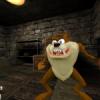Green_Baron said:
You probably mean ungulates.
So 4 legged is ungulate, and 2 legged is… still biped? Or is there another name for biped too then? Though, i think in robotics saying quadruped vs. biped is common - never heard ungulate.
The com of animals is high, but only in relation their their body (on top). But for balancing physics the shape of the body is not relevant, only the position of the com in relation to the size of the support polygon. (Ofc. shape affects moment of inertia but that's only another huge plus for the animals)
Animals have very stable balance along front and back, and only left right is unstable. They avoid to swing left and right - they can not do it at all (similar to how humans can not swing forth and back).
So i only meant this physical property, no other related things like evolution and environmental threats which i guess has more affect on how long it takes until creatures can move after birth, admitted.
NikiTo said:
With these long legs, it is not as low as with the short baby legs.
Length of legs is also irrelevent for the same reasons. Babies also have smaller feet, and their huge head is heavy… i guess :D
Biped balancing is done only by the ankles. No other leg stuff involved. And only the summed up mass properties of the whole body affect balance. The shape affects those properties only indirectly with mass distribution. If you wear iron shoes weighting a ton, balancing becomes super easy even if you're tall and thin.
There are other ways to achieve balance, e.g. utilizing a flywheel:
But humans can't do that aside of swinging arms a bit when standing at the edge of an abbyss.









